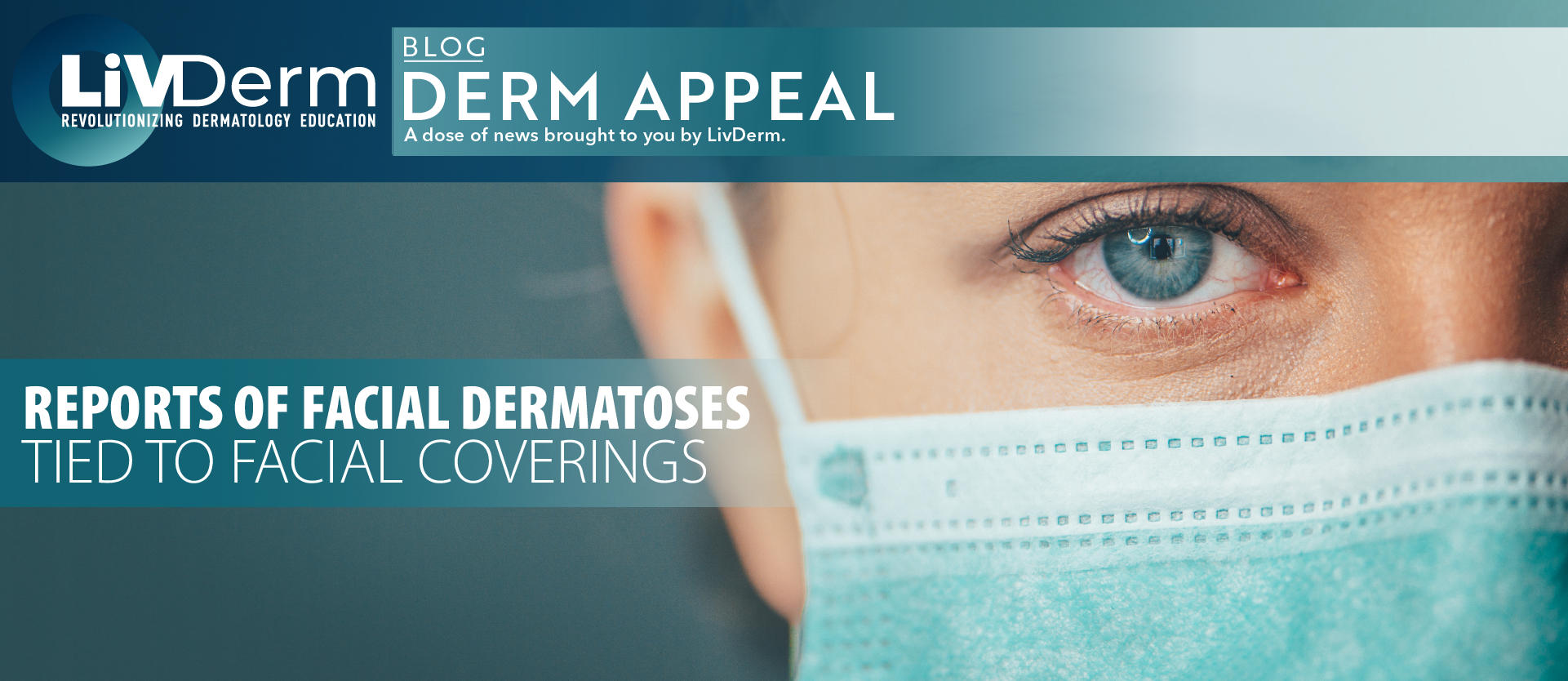As the use of personal protective equipment (PPE) has been continuously recommended by health experts as a preventative measure against the COVID-19 outbreak, incidents of acne, rosacea, and eczema flareup symptoms are on the rise. While in earlier phases of the pandemic adverse skin reactions were primarily reported by healthcare workers who spent extended hours wearing face masks and other PPE, now mask-related skin irritation has emerged in the general population. As individuals adapt to lessened stay-at-home orders and increased mobility, newly implemented mask mandates enforce the use of facial coverings in public spaces to curb disease spread and have contributed to a spike in dermatologic concerns.
Documenting increasing reports of cutaneous conditions, a new case seriespublished in Clinical and Experimental Dermatology outlines the occurrence of facial dermatosis in Italian patients after lockdown restrictions were lifted.
Cases of Facial Dermatosis
Authors of the case report presented clinical details of three patients with differing facial symptoms. Each patient was treated with a different topical or oral medication for a duration between 2 weeks and 3 months.
The first case describes a 32-year-old woman who was diagnosed with rosacea after presenting with a persistent bilateral erythematous rash for 2 weeks following the lockdown period. Her condition was directly related to wearing an N95 mask for 6 hours per day at work in a shared office setting. She was treated with 40 mg of doxycycline for 12 weeks.
The second patient was a 24-year-old woman who was diagnosed with occlusive acne after presenting with numerous inflamed papules, pustules, and microcomedones around the chin and jaw area. Although she had a prior history of facial seborrhea, the reported symptoms were unrelated to previous conditions. The patient used both a face mask and goggles for the duration of her 8-hour shift as a bartender. Treatment included an adapalene 0.1% and benzoyl peroxide 2.5% gel applied daily for 8 weeks as well as 175 mg of zinc gluconate and 27 mg of nicotinamide daily for 3 months.
Finally, the third patient case was that of a 29-year-old man who presented with acute exacerbation of seborrhoeic dermatitis. His symptoms included erythema and greasy scales on the nose, cheeks, and beard – all areas covered by a facial mask. Treatment included a low-potency steroid cream applied for 5 days followed by a pimecrolimus 1% ointment applied daily for 10 days.
A Clinical Challenge
The persisting COVID-19 pandemic poses a clinical challenge for the treatment of facial dermatoses. Although facial coverings have proven to induce occlusion, cause irritation, and exacerbate skin conditions, the widespread use of PPE by the general population is a necessary component of curbing disease spread.
There are a few alternatives to manage cutaneous symptoms related to facial coverings. “A surgical mask can be recommended instead of an N95 mask, if the work activity allows it,” the case report notes. Meanwhile, the suggested treatment for facial dermatoses patients should include tips on daily skin care aimed at minimizing mask-induced dermatologic symptoms, such as recommending the application of moisturizing creams to protect the skin barrier both before and after facial coverings are worn.
The latest reported case studies aim to highlight the need for awareness of a growing risk of facial dermatoses in the general population as well as potentially effective treatment methods.
As an added benefit, treating facial dermatoses may work to further prevent the spread of COVID-19 and reduce the number of patient infections as dermatologic symptoms tend to induce scratching, itching, or otherwise removing facial coverings and thus, reduce PPE effectiveness.
















